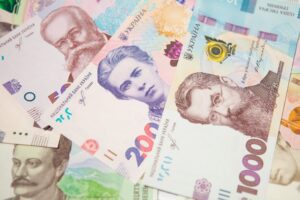
The transition from a fixed to a floating exchange rate with a temporary limitation of daily exchange rate fluctuations within a narrow range is proposed by UC Berkeley economics professor Yuriy Horodnichenko in an article on the analytical platform Vox Ukraine.
“Because of the nature of a fixed exchange rate, potential price distortions and imbalances accumulate over time, and the economy eventually reaches a tipping point where an exchange rate adjustment is needed again. Consequently, another exchange rate correction during a protracted war will almost certainly happen,” he explained the need to abandon this regime.
According to Gorodnichenko, among the imbalances already visible are an increase in the real exchange rate, a gap between the official and cash exchange rates, a lack of attention to the euro (since the EU is Ukraine’s main trading partner) and the political postponement of necessary exchange rate adjustments.
“Given the high sensitivity of inflation expectations to the exchange rate in Ukraine, a free floating exchange rate could entail excessive macroeconomic volatility. Indeed, the hryvnia fluctuated sharply during 2014-2015 after the first Russian invasion. We need an intermediate solution,” said the economist.
In his opinion, limiting daily fluctuations in the exchange rate (for example, 0.1% on any day) could be an acceptable intermediate solution. Among the advantages of this option Gorodnychenko mentioned operational freedom of the central bank, the absence of sharp macroeconomic adjustments and shocks, the NBU’s management of the euro-hryvnia exchange rate during Ukraine’s accession to the EU.
He added that such a regime does not mean a mandatory devaluation of the hryvnia. “The experience of the hryvnia during the COVID-19 crisis highlights how useful this is for Ukraine: after the hryvnia weakened during the first days of the crisis, it eventually strengthened as demand for Ukrainian products remained high. Due to such flexibility the Ukrainian economy felt relatively well in 2020-2021,” reminded the economist.
Gorodnychenko stressed that this policy alone cannot solve all problems, such as the broken mechanism of monetary transmission, and to achieve the desired results it will need to be supplemented by other measures, particularly restricting capital flows, the alignment of interest rates on deposit certificates of the NBU and government bonds.
The economist pointed out that there are other options for intermediate solutions, but they are, in his opinion, less preferable.